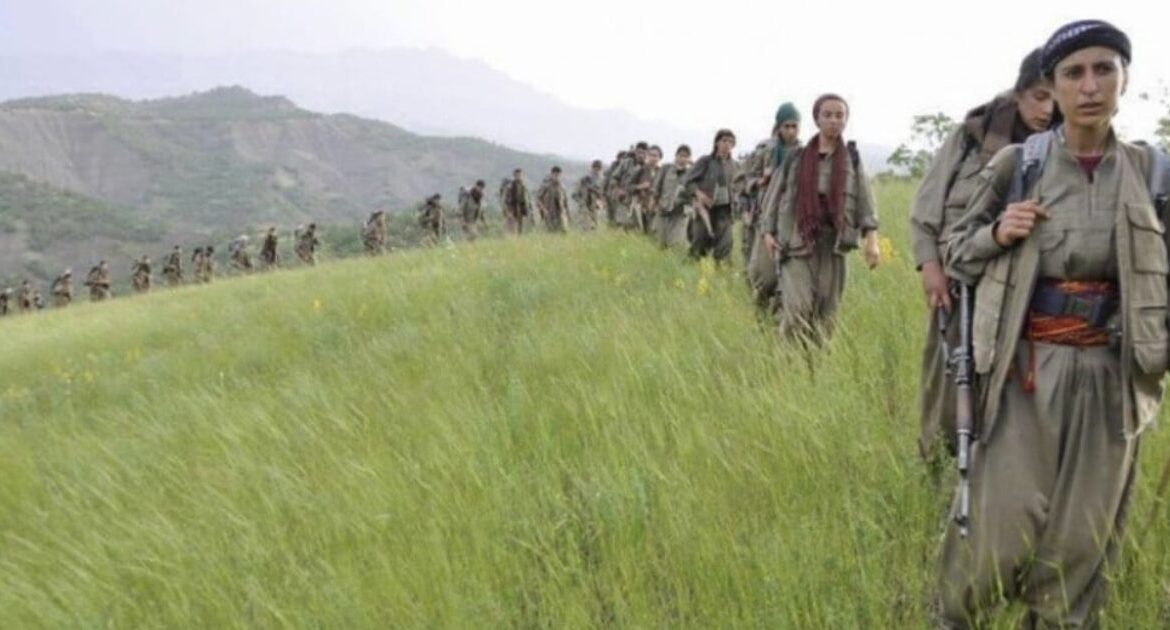
Reporting from Syria: How the Fight Against ISIS Gained Women’s Rights in Kurdish-led Rojava, Syria


On a street corner in Qamishli, Rojava, Syria, stands a mural celebrating women’s rights. “This would be impossible in the rest of Syria,” my translator explains. In Kurdish-led Rojava, officially the Autonomous Administration of North and East Syria (AANES), women have equal rights with men. In the rest of Syria, particularly under the new Islamist government, women have virtually none.

Even in Rojava, those rights were not handed to women. They earned them on the battlefield. During the Syrian civil war, the YPJ (Women’s Protection Units) and YPG (People’s Protection Units) fought against several groups in northern Syria, including the Islamic State (ISIS). The war began in 2011, and women joined mixed YPG units from the start. When the YPJ was officially founded in 2013, all female fighters from the mixed units became part of this all-women force.
Between 2014 and 2017, YPJ membership grew rapidly, from about 7,000 to as many as 24,000 women. Their participation was crucial in major battles against ISIS. The Siege of Kobani, which began in March 2014, became one of the most iconic moments of women’s resistance. YPJ troops played a vital role in defending the city, and by October 2014, the United States began coordinating airstrikes with YPJ and YPG forces.
On August 30, 2015, the Bethnahrain Women’s Protection Forces (HSNB) were founded in Tirbespiyê (al-Qahtaniyya) as an autonomous women’s protection force affiliated with the Syriac Military Council (Mawtbo Folhoyo Suryoyo, MFS). Initially consisting of only a few dozen women, the unit received early support from both the MFS and the Sutoro, the autonomous security forces of the Syriac community.
By September 1, 2015, the HSNB had officially become an all-female Assyrian and Syriac Christian brigade under the Syriac Military Council. They went on to play an important role in numerous offensives against ISIS, including in Hol, Hasaka, Raqqa, and Shaddadi. Beyond the war against ISIS, their participation has been crucial in defending northeast Syria from Turkish-backed jihadist incursions. While rooted in Christian communities, the HSNB also includes Kurdish and Armenian women, reflecting the diverse makeup of Rojava’s multiethnic resistance.
Through these battles, the women of Rojava won not only their freedom but also their place as equals in society, something still unimaginable in much of Syria today. At the ten-year commemorative ceremony for the HSNB, YPJ commander Viyan Adar declared, “Through the resistance of Syriac, Armenian, Kurdish, Arab, and Assyrian women, a new, democratic, and multicolored Syria is being built.” The recognition of both women and Christian minorities in Rojava reflects the inclusive and pluralistic state the Rojava administration is striving to build, while the rest of Syria continues to move in the opposite direction, toward Islamist domination and repression.
In an interview with The Gateway Pundit, Lana Hussain, a female soldier from the YPJ Women’s Protection Units of the Kurdish-led Syrian Democratic Forces (SDF), said, “The ISIS mentality. They don’t give women the right to be women. But the new fight is against the ideology.”
The Damascus government of Ahmed al-Sharaa (also known as al-Julani) is composed of individuals with deep ties to extremist factions, allowing the ISIS mentality to persist in areas outside of Rojava. Under the former Assad regime, there were three female ministers among thirty cabinet members; under al-Sharaa, there is only one. And she happens to be Christian, enabling the extremist administration to make a false claim of diversity and representation.
Meanwhile, the central government continues to demand that the SDF disarm and integrate Rojava into the rest of the country. The reality, however, is that extremists still persecute minorities, Alawites, Sunnis, Druze, Yazidis, Christians, Armenians, Assyrians, and Kurds, making such integration both dangerous and unjust.
Inside Rojava, by contrast, ethnic and religious minorities receive full representation in government, the military, and civil life.
In addition to persecuting minorities, the extremists in Damascus also deny women their rights. “When we negotiate with the new government, there are only two rights guaranteed for women in the constitution,” explained Lana Hussain, a female soldier from the YPJ Women’s Protection Units of the Kurdish-led Syrian Democratic Forces (SDF). “One is that women can work, and the other is that they can study.”
A Kurdish woman working for an international NGO added, “And the only reason they let women work is so they can earn money for their husbands.”
This is the situation women in Syria face today, and it is likely to worsen as Islamists further entrench themselves in government. Two exceptional women are standing against this trend: Stera Qasim, an administrator of the Women’s Council of North and East Syria, and Amina Omar, who served as co-chair of the Syrian Democratic Council (SDC), the political wing of the Syrian Democratic Forces.

The council works in close alignment with Kongra Star (Kurdish for “Star Congress”), a confederation of women’s organizations in Rojava founded in 2005 under the name Yekîtiya Star (“Star Union of Women”). Kongra Star represents the interests of women from all backgrounds, Kurdish, Christian, Arab, and other minorities, advocating equality, representation, and empowerment throughout the Autonomous Administration of North and East Syria.
Both women hope to see similar progress in women’s rights across the entire country, but in areas controlled by the Damascus government, achieving such change remains a distant aspiration.
In an interview with The Gateway Pundit, the two explained that the revolution helped elevate the status of women in Rojava. When the revolution began in 2011, women began advancing within the movement and taking on greater responsibilities. However, they were quick to point out that Kurdish women had been active in public life since 1957. The revolution, they said, gave them the opportunity to build on that legacy, becoming more democratic and continuing their social and political development.
They noted that Kurdish women serve as examples for Arab, Syrian, Armenian, and Turkish women throughout Syria. The revolution in Kurdish women’s history stands as proof of their work and capabilities. The representatives stressed that their revolution depends on the principle that women are central to the movement.
Kurdish women became icons for other communities, demonstrating their strength and experience, which encouraged women from Arab, Circassian, Christian, and Yazidi communities to join the project and create this society together.
In 2019, they established the Women’s Council, which includes all civil institutions, charities for women, youth movements, women’s parties, and other organizations representing women. This council functions as an umbrella organization bringing together political, democratic, and women’s rights groups with various principles.
According to the Syrian Democratic Council, women hold a minimum of 40 percent representation across all political bodies under the Autonomous Administration of North and East Syria (AANES), with parallel women’s councils ensuring their voices are directly included in decision-making.
Amina Omar explained that they created their own laws for women, including prohibitions on marriage under age 18, forced marriages, and polygamy. These achievements align with legal reforms established since 2014 that have enshrined gender equality, outlawed child and forced marriages, and reclassified “honor” killings as murder.
These laws are significant for the Middle East, as they specifically protect women—something rare in the region. In fact, women in Rojava arguably enjoy more rights than almost anywhere else in the Middle East. To safeguard these achievements, they have also drafted a women’s constitution designed to preserve the progress made over the past 14 to 15 years and prevent any reversal of those gains.
In Arab-majority regions, implementing laws and reforms to protect women has proven more difficult, while in Damascus-controlled areas, there has been no progress at all. Stera Qasim joked about the challenge of extending full rights to women across Syria, saying, “In the movies, Tom Cruise is Mission: Impossible. Ours is ‘Mission Very Difficult,’ but not impossible.”

The post Reporting from Syria: How the Fight Against ISIS Gained Women’s Rights in Kurdish-led Rojava, Syria appeared first on The Gateway Pundit.
